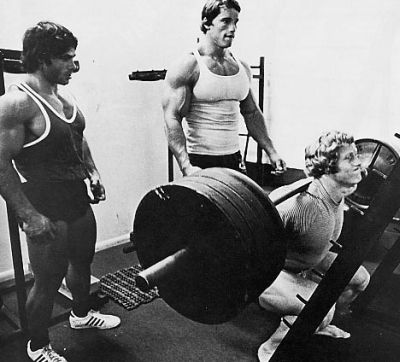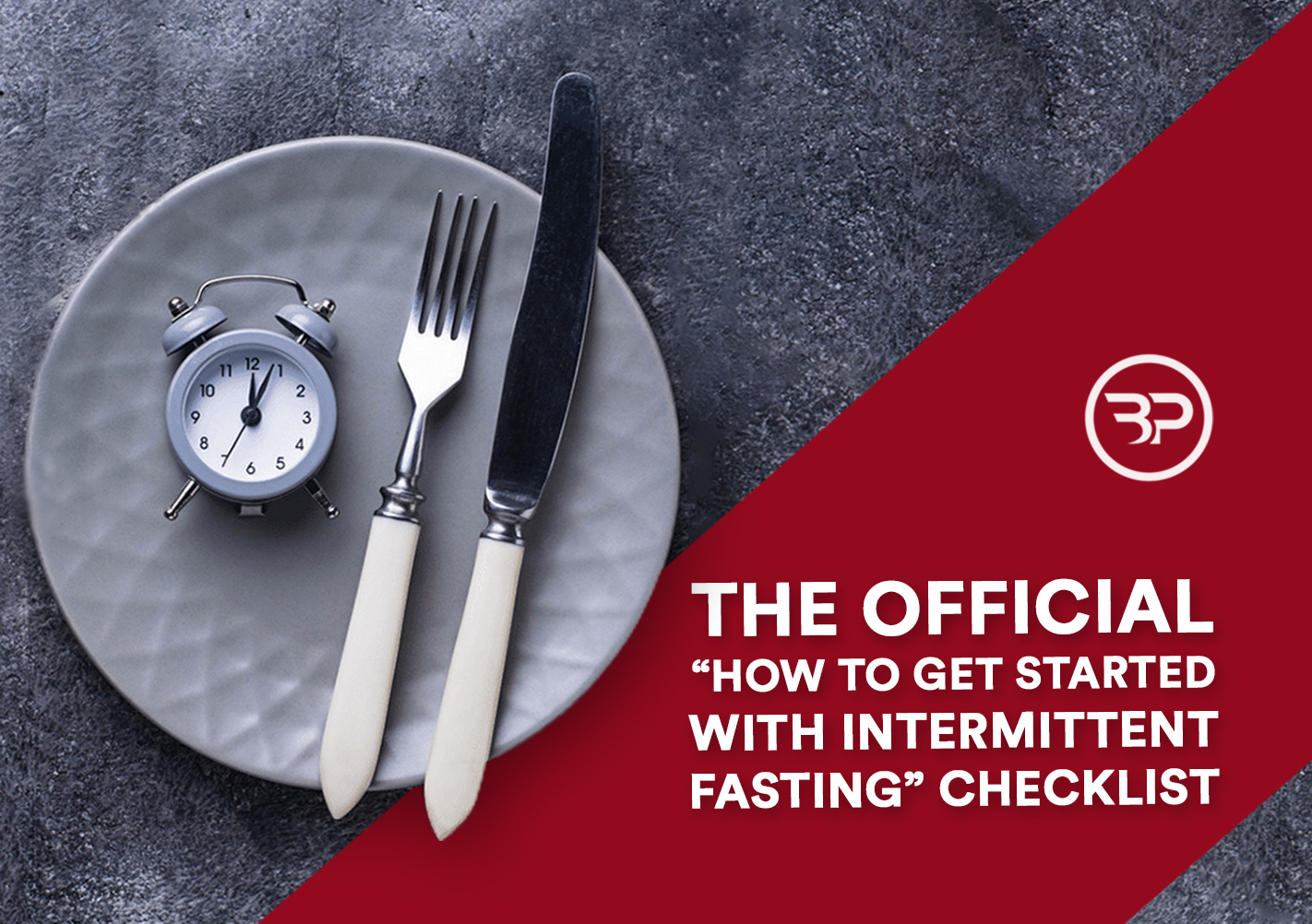Quick Guide to Minimalist High Performance Lifting
May 26, 2015
Overview:
-Total body training improves workout efficiency by minimizing the fluff to get you strong and muscular in a hurry
– You’ll hit major movement patterns multiple times per week in a variety of intensities and rep ranges to stimulate the most number of muscle fibers
– When in a time-crunch, total body training is best for making huge strength gains despite a lack of training time
Life is hectic—I get it.
That doesn’t mean you pack it in, make excuses, and abandon high-performance lifting.
We don’t neglect our jobs, education, or family for more time under the bar; instead, we must maximize training through proper planning and precise execution to build strength and muscle.
The cool thing about strength training is there are a endless number of exercises, variations, and programs that get great results.
Unfortunately, this causes problems like program hopping and doing “fluffy” exercises instead of the big lifts that create the most physiological change.
Seven lateral raise variations? Gone.
A whole day of biceps? Sorry, not happenin’.
Bosu Ball Circuit? No. Just, no.
It’s hard to stick with a training program long enough to get results when you’re constantly bombarded by the next great workout or the ultimate program.
You can’t blow-up your program every few weeks because something new, shiny, and sexy was posted on your favorite training site.
Without consistent overload basic movement patterns you will never build a body that is strong, shredded, and athletic.
Its time to train with maximum efficiency, hammering proven methods, principles, and exercises to supercharge your training.
How to Maximize Training Efficiency
You want a body that is both show and go, I get that. You want to be strong, shredded, and athletic enough to conquer what life throws at you and look like an athlete doing it.
Instead of inefficient isolation exercises you will now emphasize total body movements.
One day is focused on training heavy to build strength.
Another day is focused on a high training volume to build slabs muscle.
The third day is focused on total body, high-speed movements to improve athleticism and shred fat.
Altogeher, the workout is centered on the best bang-for-your-buck exercises to build athletic muscle with the flexibility to select exercises that fit your goals.
The Workout for High Performance Lifting
Major Movement Patterns
The major movement patterns programmed to eliminate gaps in training and mimic movements in life and sport so you’re prepared to take on whatever life throws at you.
These six patterns are: pushes, pulls, hinge, squats, carries and lunges, with each pattern performed weekly. Accordingly, you’ll build a balanced blend of strength and muscle stay healthier, stronger, and more athletic.
Exercises:
Training each movement with fluctuating intensities prevents gaps in strength development by training multiple qualities on the force velocity curve and attacks multiple muscle fibers for maximum development. That means you’ll improve strength faster and build muscle more readily than simply always training with the same speed, rep range, and intensity.
Push: Horizontal focus, vertical if tolerated. Floor press, BB bench, overhead press, DB bench, push up variations, push press, lever press
Pull: db row, chest-supported row, bent over row, chins up, and high pull
Hinge: Conventional deadlift, sumo deadlift, RDL, snatch grip deadlift, swings
Squat: Front squat, back squat, box squat, zercher squat, goblet squat
Lunge: Bulgarian split squat, step-up, reverse lunge, forward lunge, lateral lunge
Carry: waiter walks, overhead carries, farmer walks, single arm carries
Optional Olympic Lifts:
If you know how to perform Olympic lifts, they’re the best bang-for-your buck exercises. If you’re technically sound they will vastly improve the efficiency of your workouts. This way, you’ll build strength and athleticism in less time.
Why?
The Olympic movements require movement over the entire body: wrist, elbow, shoulder, ankle, knee, and hip joints and in excess of 200 muscles to generate a coordinated, powerful movement. No other lifts builds high-performance bodies and require tension, coordination, and power like the Olympic lifts—make them a priority or get left in the dust.
Here’s a step-by-step progression to learning the hang clean.
Olympic: Hackey pull, hang clean, power clean, hang snatch, full snatch
Build a bulletproof trunk
A strong core maintains position and makes precise adjustments to the movement of limbs, resists forces, and maximizes movement efficiency. This helps you maximize performance and prevent injury whether you’re lifting heavy, picking up your kid from the ground, or playing beach volleyball on vacation.
Train common weak points like trunk stabilization, anti-rotation, anti-flexion exercises as highlighted in this gem of an article “Building a Superhero Core” by Tony Gentilcore.
In addition, incorporate glute activation, hip mobility, T-spine mobility and upper back pulling between movements as non-competing active recovery exercises. Just because you’re training efficiently doesn’t mean you need to neglect common problem areas.
Add the following exercises for better trunk and glute activation:
Quadruped Scorpion
Supine Hip Thrust
Quadruped Fire Hydrant
Squats and deadlifts help with total body development, but they aren’t to fill in all the gaps—get these done.
Rules, Progression and planning:
Work sets are balls to the wall. This doesn’t mean jumping over prescribed reps or intensities, it means having precise focus and applying maximal force to the bar every on rep. If you have minimal time to train the effort you put forth becomes more vital to your success.
The workout takes the following order
1.Dynamic Warm-Up: A dynamic warm-up is a no-brainer—prepare your mind and body for activity. Limber eleven or agile 8 by Joe Defranco are a great starting point.
2.Movement skills: If you’re an athlete, you need to move—lifting is supplementary to movement you’ll use on the field. Sprint and change of direction work is extremely neurologically intensive and is done before you lift and after the warm-up. This will potentiate the nervous system to improve strength performance and help you recruit more muscle to build more mass.
3.Throws/Jumps: Throws and jumps are max-effort to increase explosiveness and “rev” the nervous system for greater lifting performance.
4.Resistance Training: It’s go time. Put your money on your “focus” exercise and push it.
5. Conditioning: Time permitting, conditioning work is done after resistance training at the end of the workout. 10-15 minutes of high-intensity exercise like submaximal sprint work and prowler pushes is plenty. If strapped for time push the tempo during your lift with short rest periods. This way, you’ll conditioning the body and shred fat during the lift.
Here’s a Sample 3-Day Program
Day 1: Heavy: 85-90% 4×2-3
Dynamic Warm-Up
1a. Power Clean Or Front Squat 4×2-3 (Heavy)
2a. Lateral Band walk 3×10/leg
2a.Floor Press 4×2-3 @85% (Heavy)
2b. Band pull-apart 4×15
3a.Supinated Bent over row 4×8
3b.Goblet Split Squat 2-3×12/leg
Conditioning: Hill Sprints 10 minutes
Day 2: Volume: 4×8 @70-75%
Dynamic Warm-Up
1a. DB Jump Squat 3×5
1b. Palloff Press 3×15/side
2a. Front Squat 5×5 @75% (Volume)
2b. Fire Hydrant 3×10/leg
3a. Chin Up 4×6
3b. DB Shoulder Press 4×8-12
4a. Farmer Walk 3×30-60 seconds
4b. Hammer Curl 3×12-15
Day 3: Speed: 5×3 @60-65%
Dynamic Warm-Up
Sprint 5×10 yards
1a. Broad Jump 3×5
1b. Birddog ISO Hold 3x30s/side
2a. Trap Bar Deadlift 5×3 @60% (Speed)
2b. Plank 3×30 seconds
3a. DB Bench Press 4×8
3b. DB Row 4×8-12
4a. DB Walking Lunge 3×8/leg
Progression and planning:
Pick the same focus exercises for a six-week cycle before changing movements.
Follow the program for six weeks followed by a weeklong de-load where you back down your intensity and volume, working at 65% or so for 3×5 to recovery and reap the rewards of your training. Without recovery, there is no growth!
| Week | Day 1 | Day 2 | Day 3 |
| 1 | Heavy: 85-90% 4×2-3 | Volume: 4×8 @70-75% | Speed: 5×3 @60-65% |
| 2 | Volume: 4×8 @70-75% | Speed: 5×3 @60-65% | Heavy: 85-90% 4×3 |
| 3 | Speed: 5×3 @60-65% | Heavy: 85-90% 4×2-3 | Volume: 4×8 @70-75% |
| 4 | Heavy: 90-100% +4×2 | Volume: 5×6 75-80% | Speed: 5×3 65-70% |
| 5 | Volume: 5×6 75-80% | Speed: 5×3 65-70% | Heavy: 90-100% +4×2 |
| 6 | Speed: 5×3 65-70% | Heavy: 90-100% 4×2 | Volume: 5×6 75-80% |
FAQ:
How long between workouts?
One rest day between workouts best. This program does well on a Monday, Wednesday, Friday or Monday, Wednesday, Saturday split.
Why the range in work percentages?
The range in percentages during each day provides flexibility if you come in without your A-Game. If you don’t know percentage that’s fine, you’re not a powerlifter. Aim for heavy work-sets within the rep range specified and continue adding weight to progress.
How long do I rest between sets?
Exercises like planks are implemented between your sets and count as active recovery during sets. With those included, keep rests 2-4 minutes on heavy exercises and 60-90 seconds on all other exercises.
Do I need to include the movement skills?
If you want to be athletic, you need to move—simply lifting won’t cut it. If you’re performing high velocity speed work perform it after thorough warm-up in a non-fatigued state. If you just want to get swole and don’t care if you become a walking ball of fail on the field, then ignore it completely.
Will I build Muscle on this program?
That depends.
If you complain of hard gainer syndrome and eat 2,000 calories per day then you’re in the wrong place. If you’re consuming ample calories and consistently getting stronger, muscle gains will come.
How about additional workouts?
If you fit in a fourth day, great.
Keep it at the end of the week so it doesn’t compete with strength gains.
Use this fourth day to focus on your weak-points: conditioning, biceps, shoulders, your pencil neck, or whatever floats your boat.
Sneak in push-ups, bodyweight squats, band-pull aparts, and pull-ups during the week—the additional volume adds up.
Conditioning—what do I do?
Jump rope, High rep kettlebell swings, prowler pushes/pulls, hill sprints, and high intensity finishers for 10-15 minutes work best to improve cardio and increase fat loss.
Fat Loss Complexes
What do you recommend for recovery:
After your workout is a perfect time to soft-tissue work and flexibility. Perform your dynamic warm-up as a cool down, grab a foam roller, and take a few minutes to get better at the things you’re neglecting.
Ending Thoughtz
If you’re busy with family obligations or a fast-paced career you have minimal time to train.
I get it, most of my clients are extremely busy with a limited schedule too.
Instead of trying to perfect everything its best to pick the most effective exercises to build strength, athletic muscle, and stay lean—this is the program to do it.
Eliminate the fluff and start training the things that really matter—progressive overload, compound multi-joint exercises, and moving like an athlete instead of endless isolation and variation.
Keep it simple, get stronger, and do it on your schedule.
“It’s not the daily increase but daily decrease. Hack away at the unessential.”-Bruce Lee
Image source: http://www.nhs.uk/Tools/Pages/Workplacestress.aspx
Want to Join the Discussion? Hit us up on Facebook
[Brand New]Beyond busy and unable to make the progress you want in the gym?This will help:Posted by Bach Performance on Tuesday, May 26, 2015










[…] Quick Guide to Minimalist High Performance Lifting — Eric Bach […]
[…] Quick Guide to Minimalist High Performance Lifting — Eric Bach […]
[…] 2. Quick Guide to Minimalist High Performance Lifting via Eric Bach […]
[…] Quick Guide to Minimalist Performance Lifting via Bach […]
[…] Related: Guide to Minimalist Lifting […]